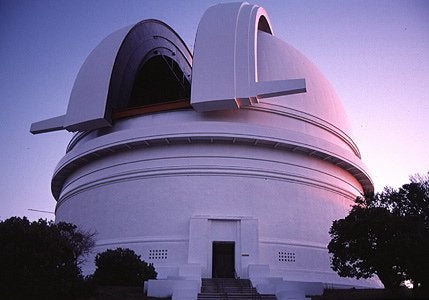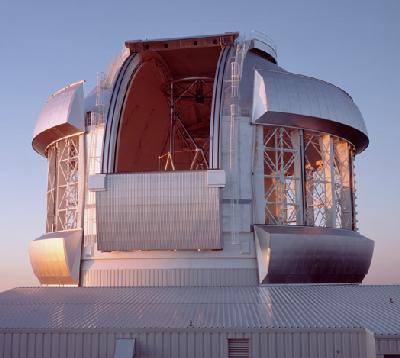It’s a turbulent question.
As it turns out, white paint tends to make a dome’s outer surface too cool at night, relative to the ambient air temperature. The result is micro-thermal turbulence around the dome — in other words, bad news for sharp, crisp images.
Modern observatories go to extreme lengths to control the thermal environment immediately around the telescope. Most don’t even allow people to be inside the enclosure when the telescope is taking data, as the turbulence of even one warm body is too much. Likewise, many observatories have constructed completely separate buildings for all of the control and computing equipment to minimize vibration within the enclosures.
The Gemini Observatory effectively places their telescopes in the open air by using huge vents around the dome sides. Within ten seconds of opening the vents, the entire enclosure volume has the same temperature as the air outside. In addition, nearly all the heat generated during operations is pumped into the prevailing winds above Mauna Kea with huge fans located in a separate building. They even draw air through the floor to ensure that heat doesn’t rise under the telescope.











